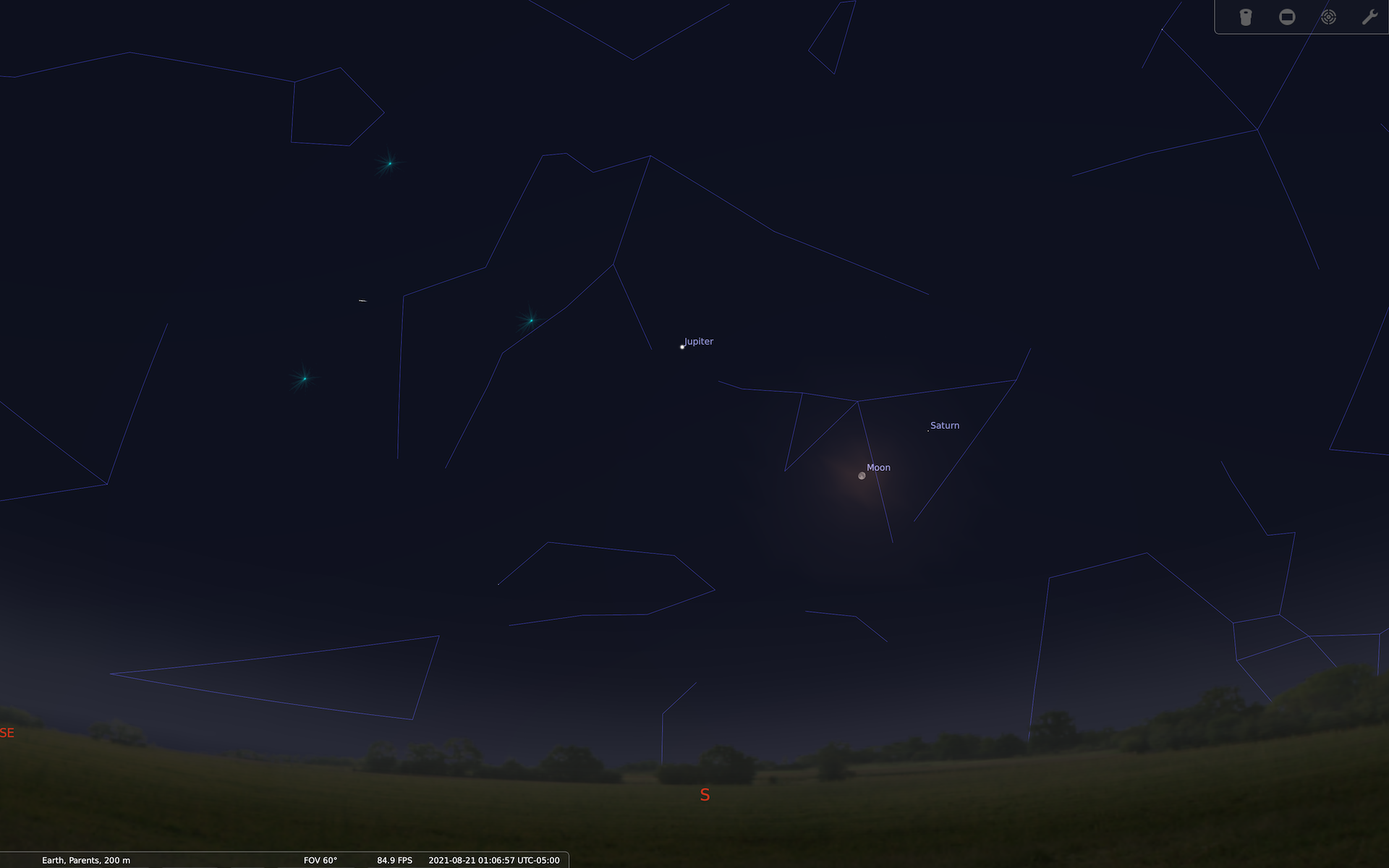
This week on What’s Up is Jupiter at opposition. First of all, before getting to what you can see on Jupiter this time of year, we’d like to congratulate the Juno spacecraft team on a successful ten years of operations since launch. It has discovered many things and taken many pictures with the JunoCam instrument. JunoCam is run out of our very own Planetary Science Institute by Dr. Candice Hansen, and you can go to the link in our show notes to see both processed images and raw data you can turn into whatever you want, be it highly artistic or accurate.
But you don’t have to go online to see pictures of Jupiter; you can see it for yourself in a telescope, even a small one. And opposition is the best time to see Jupiter when it is exactly opposite the Earth from the Sun and at its brightest. While opposition technically happens on August 20, Jupiter has been high and bright for several weeks now and will continue to be nice and bright for several more months before slipping below the horizon to reappear in the early morning early next year.
Jupiter spends a lot of time above the horizon and because of this, you can observe it over a long period of time and even see its four major moons. The Galilean moons Io, Callisto, Ganymede, and Europa go around the planet, going behind and then coming around again as they orbit the planet.
Galileo discovered these moons all the way back in 1610 using a 20 power telescope, noticing that they changed position relative to the stars but stayed around Jupiter itself. This observation changed everything. It provided evidence for the heliocentric model of the solar system, that the Earth orbits the Sun along with the other planets, instead of the Sun and planets orbiting the Earth as was thought at the time.
It is best to observe Jupiter when it is highest above the horizon, to reduce the impact of the atmosphere on your view. You don’t need a telescope to do this; it can be done with 7 or 8 power binoculars. You can use the website shallowsky.com to figure out which of the moons you are looking at depending on the time of day.
With a telescope, you can see more of Jupiter. At moderately high power, like 150x, you should clearly see major features of the planet such as the equatorial band, north and south bands, and the Great Red Spot. With a large telescope, eight inches in diameter or bigger, you can resolve even more detail such as the north and south polar regions and smaller belts such as the Temperate Belts.
Here is some advice regarding making visual astronomy accessory purchases, particularly to observe the planets like Jupiter. Many beginner telescope accessory kits come with lots of different color filters, many eyepieces, and a Barlow lens which acts to double or triple the focal length of your telescope. Erik would not recommend purchasing such kits as they are uniformly low quality.
Additionally, a Barlow will result in redundant eyepieces. For example, a 30-millimeter eyepiece with a 2x Barlow works like a 15-millimeter eyepiece. But if you’ve already received a 15-millimeter eyepiece with the kit, you should be using that instead, because a low-quality Barlow will worsen image quality. This makes the 2x Barlow redundant.
You should buy individual eyepieces and color filters to fit your specific needs, and avoid getting a Barlow. This will be more expensive, but you will get a better experience overall by purchasing better equipment first. For example, if you are interested in good views of Jupiter, we would recommend the 80A dark blue and 12A yellow color filters. The 80A filter will highlight the fine details in the cloud bands and the Red Spot, and the 12A filter will show the cloud bands and poles in more detail. Both of these filters are also very useful for the Moon and Saturn as well.
As always, take some time to go out and look at the sky if you have the ability and visibility. There is always something cool to look for.
More Information
Jupiter At Opposition August 19-20, Now At Its Best (EarthSky)
Jupiter Dazzles at its Brightest and Closest This Year (Sky and Telescope)
410 Years Ago: Galileo Discovers Jupiter’s Moons (NASA)
Jupiter In-Depth (NASA)
The Ultimate Guide to Observing Jupiter (Celestron)
Choosing a Color/Planetary Filter (Agena Astro Products)




 Join the Crew!
Join the Crew!
 Escape Velocity Space News
Escape Velocity Space News
0 Comments